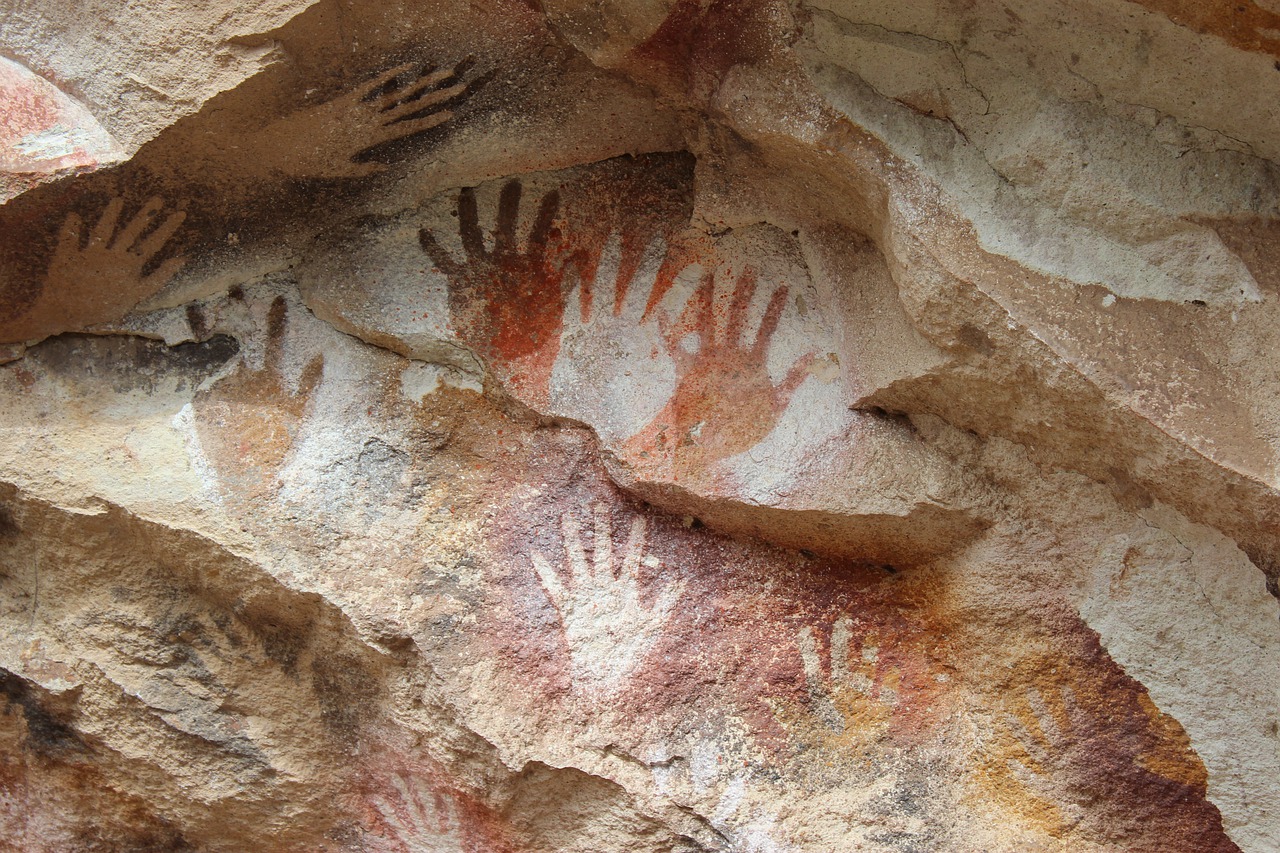Cave-dwellers were the earliest artists. Colorful drawings of animals dating from 30,000 to 10,000 years B.C. have been found on cave walls in southern France and Spain. Many of these drawings are remarkably well preserved because the caves have been sealed for centuries. Early humans painted the wild animals they saw around them. Very crude human figures made in life positions have been found in Africa and eastern Spain.
Cave artists filled cave walls with drawings in rich, bright colors. Some of the most beautiful paintings are in Altamira Cave, in Spain. One detail shows a wounded bison no longer able to stand, probably the victim of a hunter. It is painted a reddish brown and outlined simply, but skillfully, in black. The pigments used by the cave artists were ochre (iron oxides, varying in color from light yellow to dark orange) and manganese (a dark metal). They were crushed into a fine powder, mixed with grease (probably grease oil), and applied to the surface with some kind of brush. Sometimes the pigments were shaped into sticks, similar to crayons. The fat mixed with the powdered pigments made a paint liquid, and the pigment particles were glued together. Cave dwellers made brushes from animal hairs or plants, and sharp tools from silicon (for drawing and scratching).
As far back as 30,000 years ago, people invented basic tools and materials for painting. The methods and materials were refined and improved in the centuries that followed. But the discoveries of the cave dweller remain basic to painting.
